Agency proposes lifting protections for most humpback whales
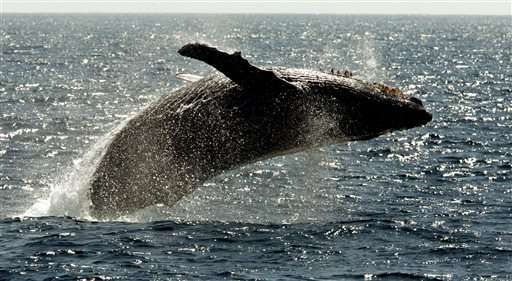
The federal government on Monday proposed removing most of the world's humpback whales from the endangered species list, saying the massive mammals have rebounded after 45 years of protection and restoration efforts.
National Oceanic and Atmospheric Administration Fisheries officials want to reclassify humpbacks into 14 distinct populations, and remove 10 of those from the list. The last time the agency delisted a species due to recovery was more than two decades ago.
Approval of the proposal would not mean there will be an open hunting season on humpbacks.
All the whales remain protected under the Marine Mammals Protection Act, and the United States is still an active member of the International Whaling Commission, which banned commercial whaling in 1966, said Angela Somma, chief of NOAA Fisheries endangered species division.
According to the International Whaling Commission's website, there are only a few places in the world that still allow hunting of humpback whales, and that is for aboriginal subsistence only. Three nations, Japan, Norway and Iceland, still allow the animals to be killed for scientific research.
Humans hunted the whales in much higher numbers before their listing as endangered. Humpbacks were listed as endangered in 1970, four years after the International Whaling Commission banned commercial humpback whaling. The commission put a stop to all commercial whaling in 1986.
Humpbacks are found around the world, and officials say protection and restoration efforts have increased their numbers in many areas. Among those recommended for delisting is the population that migrates each year from Hawaii to Alaska.
NOAA officials said decisions on which whale groups to recommend were based on many factors, including the risks they face. The single largest threat to humpbacks is fishing activities that result in the whales becoming tangled in fishing gear and drowning.
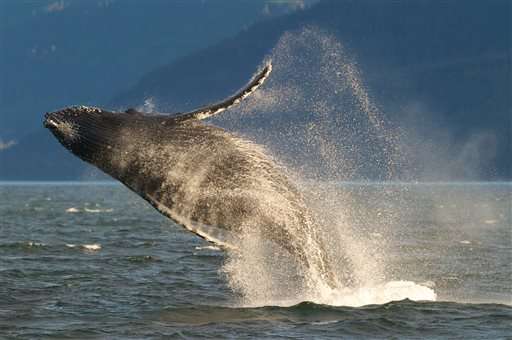
Donna Weiting, NOAA's director for the Office of Protected Resources, said the most important considerations in determining if populations will remain on the list are their size and growth rates.
"Ten of these populations are no longer in danger of extinction, which is our criteria for an endangered listing, nor are they likely to become so in the foreseeable future, our criteria for a threatened status," she said.
Under the latest plan, two of the humpback populations would be listed as threatened, in Central America and the Western North Pacific. The agency said these whales at times enter U.S. waters.
The other two populations—in the Arabian Sea and off Cape Verde and northwest Africa—would remain listed as endangered.
Marta Nammack, NOAA Fisheries' national Endangered Species Act listing coordinator, estimates the global population of humpback whales at around 90,000.
Humpbacks were placed on the endangered list in 1970. No data exists on their population then, but Nammack said their numbers were "severely depleted."
Some populations are growing at a rate of up to 11 percent annually since the listing, which requires federal approval for federally funded or authorized activities that could harm whales or their habitat.
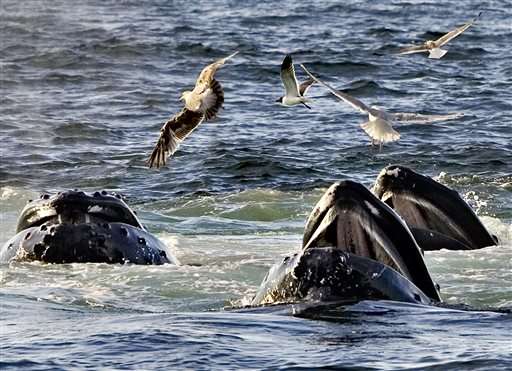
Last year, the state of Alaska filed a petition to remove some North Pacific humpback whales from protection under the Endangered Species Act. That population, estimated at more than 10,000, feeds in Alaska in the summer and breeds in Hawaii in winter.
Rebecca Noblin, Alaska director for the Center for Biological Diversity, said it's a good sign the whales are being considered for removal from the list, but it might be premature.
Whales continue to be vulnerable to factors including climate change and ocean acidification, which affects their prey stock, she said.
"It would really be beneficial to continue to have the protections of the Endangered Species Act as the oceans change," she said.
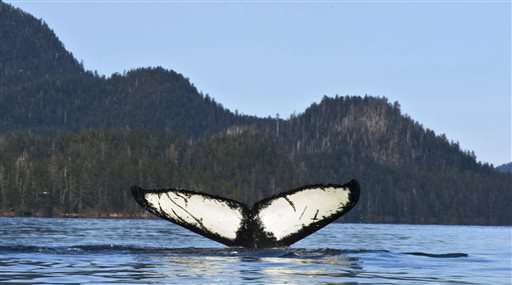
The last time NOAA removed a species from the endangered list due its recovery was in 1994, when it delisted the eastern North Pacific population of gray whales.
Humpbacks weigh 25 to 40 tons and can grow up to 60 feet long. They are primarily dark gray with some white spots, and their pectoral fins can grow as long as 15 feet, according to NOAA's website.
The public has 90 days to comment on the recommended changes.
-
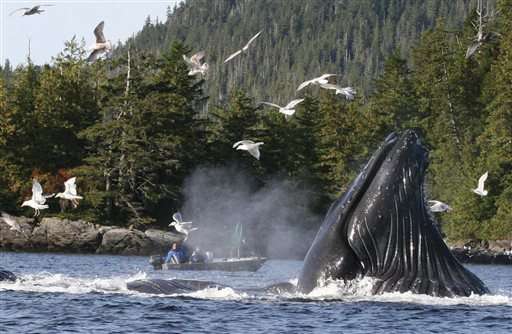
In this Oct. 3, 2009 file photo, boaters and fishermen watch as a group of up to six humpback whales feed on herring near Ketchikan, Alaska. On Monday, April 20, 2015, the National Oceanic and Atmospheric Administration Fisheries said in a release that it is proposing removing most of the humpback whale population from the Endangered Species Act, announcing that protection and restoration efforts have led to an increase in humpbacks in many areas. (Tom Miller/Ketchikan Daily News via AP, file) -
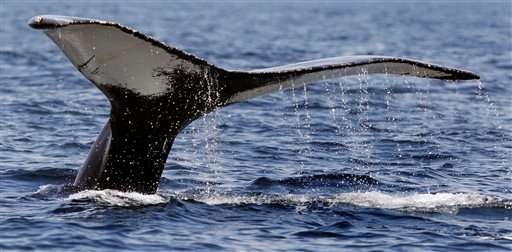
In this April 28, 2009 file photo, water pours off the tail of a humpback whale as it dives at the Stellwagen Bank National Marine Sanctuary off the coast of Massachusetts. The federal government is proposing removing most of the world's humpback whale population from the endangered species list. National Oceanic and Atmospheric Administration Fisheries announced on Monday, April 20, 2015 that they want to reclassify humpbacks into 14 distinct populations, and remove 10 of those from the list. (AP Photo/Charles Krupa, file)
© 2015 The Associated Press. All rights reserved.
















